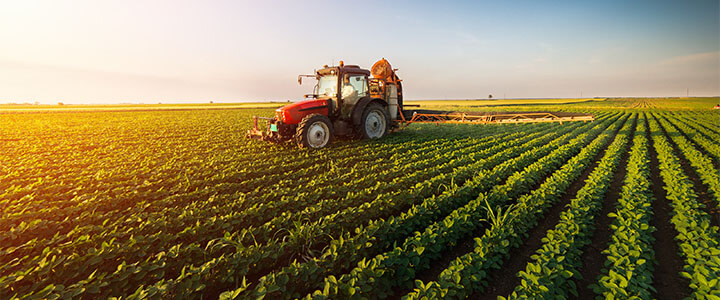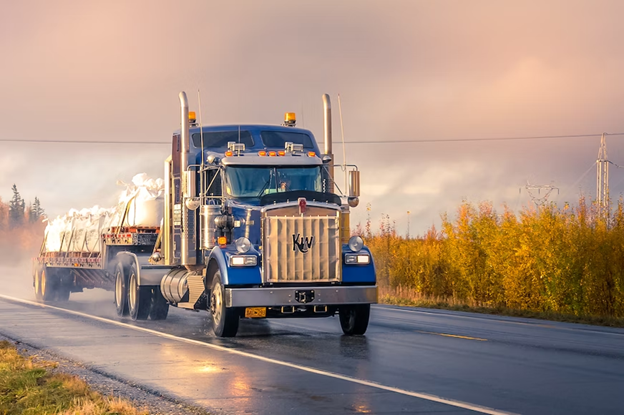How Bioregionalism Can Combat Climate Change

The question of how best to slow or halt climate change has been a variegated topic. Some insist that actions made by individuals without disrupting their current lifestyle are the best solution: use public transportation and carpooling, shop locally, avoid single-use plastic products. Others focus their efforts on creating technologies to replace parts of our daily lives, like gas-fuelled cars and coal-fuelled power plants. Still, others focus on creating policies which affect our governments at the state and federal level to regulate the industry.
There is another solution, though one far less common. Bioregionalism is a blanket term which covers any actions taken by a local community to live self-sufficiently and independently from a larger network of resources. While this can be motivated by any number of reasons, bioregionalism addresses climate change with the simple thought that making a big difference means changing the way we live from the bottom up.
Bioregionalism’s unique perspective on combating climate change is the most effective strategy we have. It doesn’t rely on the actions of independent individuals to make a change, nor does it depend on large government forces making blanket changes which can’t be tailored to individual regions. Instead, it relies on the power of local communities making strong and active decisions which will then effect institutions on the state and regional level.
Bioregionalism and Climate Change at the Local Level
Every part of the world has its own unique climate and resources. Our local environments are impacted by climate change on the global scale, but we often live disconnected like this; for example, we may know on some conscious level that the beans we pour into our coffee machines come to us by a long chain of transportation and processing, but we give little thought to the methods we use to heat the water or keep our creamer cold. We do not think of how such things can be achieved sustainably, even if we give some thought to sourcing our coffee in a more ethical manner.
Living as a sustainable community is a complex task. There is no one-way-fits-all solution for each community, as different regions have access to different resources. But while the change may be drastic to us now, the concept is not a foreign one to the human race; it’s how we lived until the past few centuries.
Making the shift to a bioregional community involves retrofitting the urban or suburban environment with means to incorporate natural features. In some ways this may mean restoring parts of the wildlife that had been degraded; in other ways, this involves removing or re-planning certain structures so that the local ecosystem can function in a more natural level.
Concurrently, bioregionalism requires a shift in the attitudes of a large portion of the community to more sustainable living. This can have many different forms, from recycling to community carpool efforts to wide commitments to implementing local, renewable energy wherever possible. The emphasis here is that citizens have an active role in the well-being of the community, and see themselves as stewards of the ecosystem in which they live, rather than as simple residents.
Unlike other environmentalist efforts, bioregionalism is not satisfied with adding a few parks and planting more trees around a city. Its focus on broader, sustainable changes is made with a good deal of urban planning, which is meant to be active changes in the short-term. These foster long-term, sustainable living patterns which are more resilient than our current lifestyle.
The effects of such a lifestyle shift on the local level are profound. It reduces the entire community’s pollution footprint by focusing on renewable energy whenever possible and reducing waste put out by the community. More than that, however, it frees the local environment to its original structures. Re-establishing natural watersheds reduce flooding; building up native flora reduces erosion; encouraging native fauna reduces “pest” species and keeps native flora flourishing.
Advocates of bioregionalism are not necessarily against globalisation in all of its forms. It would be foolish to wish to throw away every technology, advancement, and understanding our societies have developed in the last 300 years, as many of them were developed to help keep us alive in the face of changing seasons, famines, and other natural difficulties.
Instead, bioregionalism seeks to find a different balance between globalism and a primitive lifestyle, one that allows local wisdom to flourish, and gives people a much-needed sense of place within a highly diverse world. The psychological effects can prove to be just as effective in combating climate change as the physical actions taken.
Bioregionalism at the State and Regional Levels
Bioregionalism is a grass-roots movement. It desires to invoke change by starting from the ground up and, as such, may take a long time to establish itself on a larger scale.
During the long-term, a shift to bioregionalism will impact the state’s trade with other states. A state conscious of its resources will not have to import as much energy, food, or goods (though some will be inevitable, especially in states that don’t have access to resources equal to their needs). Infrastructure costs will change, too; highways, for example, would see less traffic overall.
More importantly, the state’s industry will change. Governments will be pushed to create legislature regulating the polluting impact of factories. Local jobs will increase, as well, reducing commute times across the state and further decreasing pollution rates.
The effect of one state’s policies on its neighbouring states cannot be ignored, either. Cross-state trade will be impacted, and mindset shifts follow regional, rather than political, borders.
The largest spread of bioregionalism will be at the geopolitical level, and it’s there that it will have the most influence. While it may not be possible for every region to be entirely independent of a larger trade network – not every zone in a country is suited for growing crops on a level necessary to support the local population – returning entire regions to a more sustainable way of living will alter the region’s watershed, flora and fauna, and pollution levels.
A grassroots change to the way one lives has an impact on the laws governing that area, and can have a massive impact on other geopolitical regions because of the interconnected world we live in. It pushes the citizens of every community to see themselves as another species in the region they live and to act in a way that reflects that.
Bioregionalism, more than any other effort to slow climate change will change not only on our climate but on the people who live in it. Because it makes large, invasive alterations to the way a community lives, it will require more conscious and sustained effort from individuals. Because it impacts the entirety of a community’s lives, its influence will spread beyond the borders of the community.
Most importantly, however, bioregionalism is a truly sustainable way to slow climate change. It fosters the mindset necessary for living holistically in a region and improves the environment without forcing out the humans who live in it. Instead of pinning hopes on future technological improvements and taking an all-or-nothing mindset with the relationship between mankind and nature, it sees a harmonious give-and-take that can only be achieved by immediate and decisive action.
Only that kind of an approach can truly put a stop to climate change.
Bio

Hi! I am Josy O’Donnel, and I am the creator of Conservation Institute. While completing my bachelor’s degree, I developed an interest in the study of Earth’s future and the conservation of Earth’s natural resources. Years after, I am still immersed in these subjects. I want to share my passion with an online community of people who are devoted to spreading awareness and attention to the most pressing threats to the diversity of life on Earth.


















